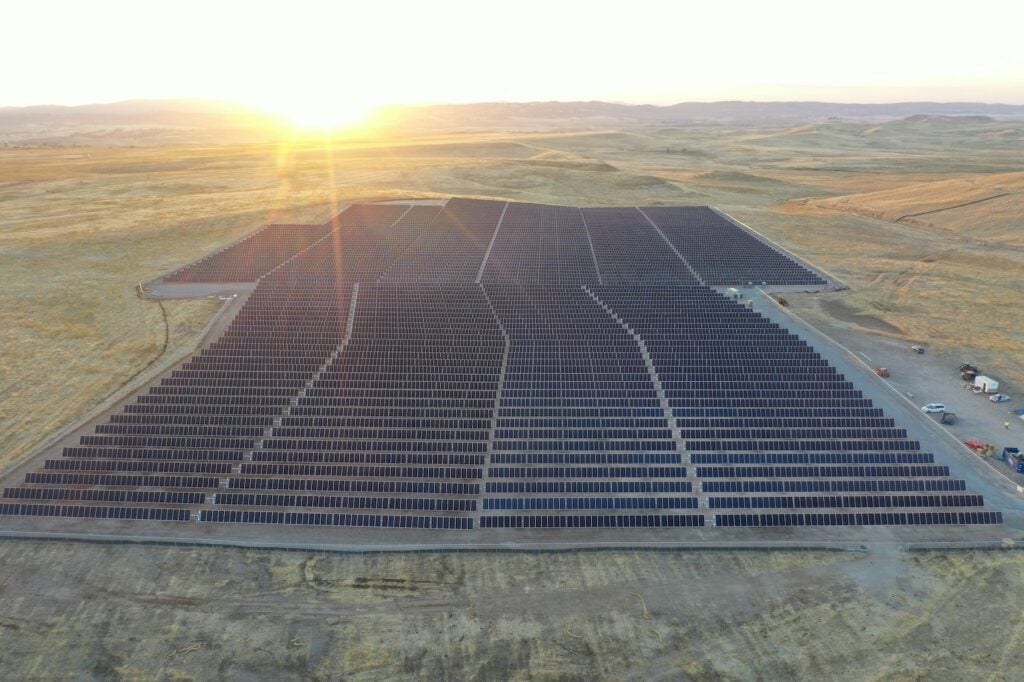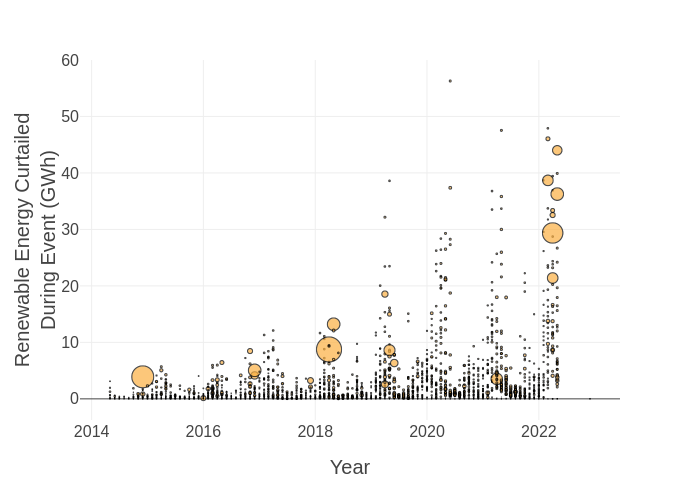
California is pursuing some of the world’s most aggressive renewable energy and decarbonisation pathways. Those hugely positive steps forward however, present some key challenges that energy storage can solve, write the team from iron-air long-duration battery startup Form Energy.
To rapidly decarbonise its electric grid, California made a smart strategic choice: build gigawatts of renewable energy – the cheapest source of electricity available globally – so the state can wean itself from more expensive and polluting fossil-fueled power plants.
Enjoy 12 months of exclusive analysis
- Regular insight and analysis of the industry’s biggest developments
- In-depth interviews with the industry’s leading figures
- Annual digital subscription to the PV Tech Power journal
- Discounts on Solar Media’s portfolio of events, in-person and virtual
From 2010 to 2020, California went from producing 3.4% to almost 22.7% of its energy from solar and wind. It plans to keep building on that momentum, and anticipates building an additional 16.9 GW of solar and 8.2 GW of wind by 2030 to meet energy demand and avoid blackouts during multi-day heatwaves such as the one the state is currently experiencing.
This capacity isn’t always needed, leading to surplus energy that is curtailed, or shut off, during milder shoulder months when electricity demand is lower.
In a world without access to low-cost, long-duration energy storage, the smart investment for California customers is to just keep building more renewables to meet peak demand and avoid burning fossil fuels during expensive summer months.
But at a certain point (spoiler alert: we’re at that point), all that excess energy produced during periods of lower demand becomes an opportunity for the state.
Why are we convinced this moment has arrived? First, renewable energy curtailment is growing faster and persisting for longer periods than expected – at times persisting over multiple days. Second, new classes of low-cost, long-duration (defined here as greater than eight hours) and multi-day (defined here as greater than 24 hours) energy storage are entering the market.
These technologies are poised to deliver long-term benefits to Californians including grid reliability and resiliency, firmed renewables over any weather event or season, improved local air quality, job creation, and local economic development.
Opportunities to store hours to days of excess renewable energy
To understand the hour-to-hour dynamics of renewable energy curtailment, Form Energy examined data from the California Independent System Operator (CAISO) detailing the amount of renewable energy curtailed in California between May 1, 2014, and May 31, 2022.
The results point to the increasing opportunity for long-duration and multi-day storage to help integrate the state’s renewable energy resources.
Figure 1 below plots individual curtailment events over the eight-year period for which data are available and shows the amount of energy curtailed during each event. The size of each bubble represents the duration of the curtailment event.
Since 2014, the average duration of continuous renewable energy curtailment in California has increased from 2.5 hours to 9.5 hours. Many of these curtailment events span multiple days, with the longest event being 71 hours in duration.
The amount of renewable energy curtailed is growing rapidly; thus far in 2022, California has curtailed more than 1,860 gigawatt-hours of wind and solar, which is enough to power more than 200,000 homes for a year. Curtailment during multi-day events specifically totaled more than 110 gigawatt-hours, up more than 37 times since 2014.

Storing excess renewable energy for when it’s needed most
During these curtailment periods, energy storage systems at the right locations can store this excess renewable energy at low cost, or even zero cost when electricity prices turn negative during periods of oversupply.
Long-duration and multi-day storage can then use this low cost excess clean energy to manage California’s demand ramps, provide power during net demand peaks, and, in the case of multi-day storage, provide reliability over multi-day lulls in renewable generation.
The first day-to-day use for this excess clean energy is to help solve California’s much discussed “duck curve” – the drop off in net electricity demand during solar production peaks followed by a rapid increase in net electricity demand as the sun sets.
If long-duration storage capacity had been available to charge with the curtailed energy shown in Figure 1 and discharge that energy during peak demand periods, California could have saved more than US$129 million since 2014 and avoided roughly 1.1 million metric tons of carbon dioxide emissions1.
The second major use case for excess clean energy is to fill energy supply during renewable energy lulls. These periods of low intermittent generation are the flip side of the renewable energy curtailment coin.
Form Energy’s analysis of 35 years of solar and wind profiles used in the California Public Utilities’ Commission’s Integrated Resource Planning Process identified 138 instances of multi-day renewable energy lulls (where a lull is defined as any period in which combined wind and solar output is more than 25% below average).
These multi-day renewable lulls pose the greatest reliability threat to deeply decarbonised grids. Today’s commercial battery technologies can economically store up to roughly eight or twelve hours of energy, meaning that they run out of juice during cloudy, calm periods of low renewable generation when they can’t recharge from day to day.
As a result, clean technologies capable of delivering energy over multiple days are critical for ensuring low-cost, clean, reliable power.
Without such technologies, grid planners will need to build vastly more renewable energy than the grid needs to meet typical energy demand and they may also need to keep fossil-fueled resources online, at high cost to customers.
Modeling of a zero-carbon grid in California in 2045 shows how this excess clean energy can be used to support grid reliability during one such lull.
Figure 2 below, taken from the preliminary results of E3 and Form Energy’s assessment of the ability of long-duration storage to help meet California’s energy goals, shows how lower solar output during a cloudy fall week makes it impossible to charge shorter-duration lithium-ion batteries such that they can’t dispatch sufficient energy to meet demand in the evening hours. Instead, multi-day storage steps in to fill this gap, serving California load cleanly and reliably when it is most needed.

With the frequency, magnitude, and duration of renewable energy curtailment events increasing in California, the opportunity for novel long-duration and multi-day storage technologies to deliver value to California customers has arrived.
Seizing the opportunity
The value of long-duration and multi-day storage technologies to the electric grid will only increase over time as California’s decarbonisation goals become more stringent and the state needs to call on firm zero carbon resources during periods of low renewable output, extreme heat, and other stress conditions.
The state’s recent heatwave led to requests for residents and businesses to keep electricity demand low for nearly a week, underscoring the emerging multi-day weather challenges the state is facing.
Fortunately, the state has already made notable strides toward bringing long-duration and multi-day storage technologies to market. In a first among states, California approved US$126 million in incentives to demonstrate new long-duration storage technologies.
Scaling these nascent technologies requires utilities to begin factoring them into resource planning, which presents a specific modeling challenge that must be addressed. Capturing the hour-to-hour operational dynamics of these resources is the key to understanding their value, which is most apparent during multi-day periods of excess energy and energy scarcity.
Current industry-standard models only capture grid dynamics during a small number of “representative” days or weeks per year, and thus understate the value that multi-day storage can provide to the grid.
However, emerging modeling tools and techniques make it possible to consider the full range of likely grid extremes and to represent the economics of resources that can shift energy across days and seasons. The combination of new long-duration energy storage technologies and better grid planning tools makes it possible to build an electric grid for California that is more reliable, cleaner, and increasingly cost effective.
Note1: Preliminary results from an ongoing Energy and Environmental Economics, Inc. and Form Energy study identified a substantial opportunity for long-duration storage in a zero carbon California grid. The capacity-weighted average round trip efficiency for the long-duration storage resources identified in this study was roughly 39.4%.
Form calculated the dollar and emissions savings numbers by multiplying the total curtailment during events of 8 hours or more (6,809,126 MWh) by the weighted average round trip efficiency (39.4%) and either the on-peak energy prices between 2014 and 2022 (for the monetary value calculation or the natural gas emissions factor (408 kg CO2/MWh) (for the avoided emissions calculation). Average on-peak energy prices for CAISO were taken from S&P Market Intelligence. The natural gas emissions factor was taken from the U.S. Environmental Protection Agency.
About the Authors
Form Energy is a US-based energy storage technology and manufacturing company developing and commercialising a pioneering iron-air battery capable of storing electricity for 100 hours at system costs competitive with legacy power plants.
This piece was written by Form’s Scott Burger, senior manager of analytics, Jason Houck, senior manager for policy & regulatory affairs, Andea Scott, summer strategy & market development analyst and Rachel Wilson, manager of strategy & market development analytics.

